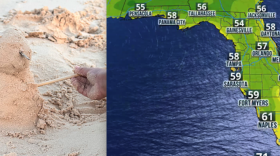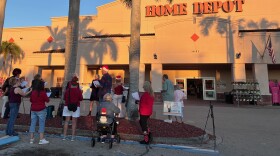The Rockefeller Center Christmas tree is coming to town. The Center has picked the huge tree that, per tradition, it will display in its plaza this year in New York City.
The tree is coming from Vestal, N.Y., is 80 to 85 years old, weighs 12 tons and is about 80 feet tall and 43 feet wide. It will land at Rockefeller Center Plaza on Nov. 11, accompanied by a ceremony with book readings, letters to Santa and ornament making.
Erik Pauze has chosen the tree for the past 30 years. As the head gardener at the Rockefeller Center, he is responsible for finding the tree, feeding and watering it, trimming it, measuring it and transporting it, a sometimes monthslong process.
Meet the 2023 Rockefeller Center Christmas Tree 🌲
— Rockefeller Center (@rockcenternyc) November 1, 2023
This year’s Tree is from Vestal, New York, weighs in at about 12 tons, and stands 80 feet tall. The Tree will arrive on Center Plaza Saturday, November 11. Follow along for more updates right here. pic.twitter.com/yjP6vCshbO
Pauze started as a "summer helper" at the Rockefeller Center in 1988 and now manages all of the Center's gardens. But he thinks about the annual Christmas trees almost every day, he said in an interview with the Center's magazine.
"What I look for is a tree you would want in your living room, but on a grander scale. It's got that nice, perfect shape all around," he said. "And most of all, it's gotta look good for those kids who turn the corner at 30 Rock; it needs to instantly put a huge smile on their faces. It needs to evoke that feeling of happiness."
The Rockefeller Center Christmas trees are Norway spruces, which are good because of their size and sturdiness, Pauze said. The largest tree so far has been the 1999 tree, which was 100 feet tall and came from Killingworth, Conn.
This year's tree will be adorned with over 50,000 lights, covering about five miles of wire.
It is topped by a star that has about 70 spikes, 3 million Swarovski crystals and weighs about 900 pounds. The Swarovski Star was first introduced in 2004.
The lighting ceremony will air on NBC at 8 p.m. ET Nov. 29. The tree will be taken down on Jan. 13, 2024.
The tradition of the Rockefeller Center tree began in 1931, when employees pitched in to buy a 20-foot balsam fir and decorated it with handmade garlands. The Rockefeller Center turned it into an annual tradition two years later and had its first official lighting ceremony.
The notable ice skating rink that sits below the tree was introduced in 1936.
Copyright 2023 NPR. To see more, visit https://www.npr.org.








